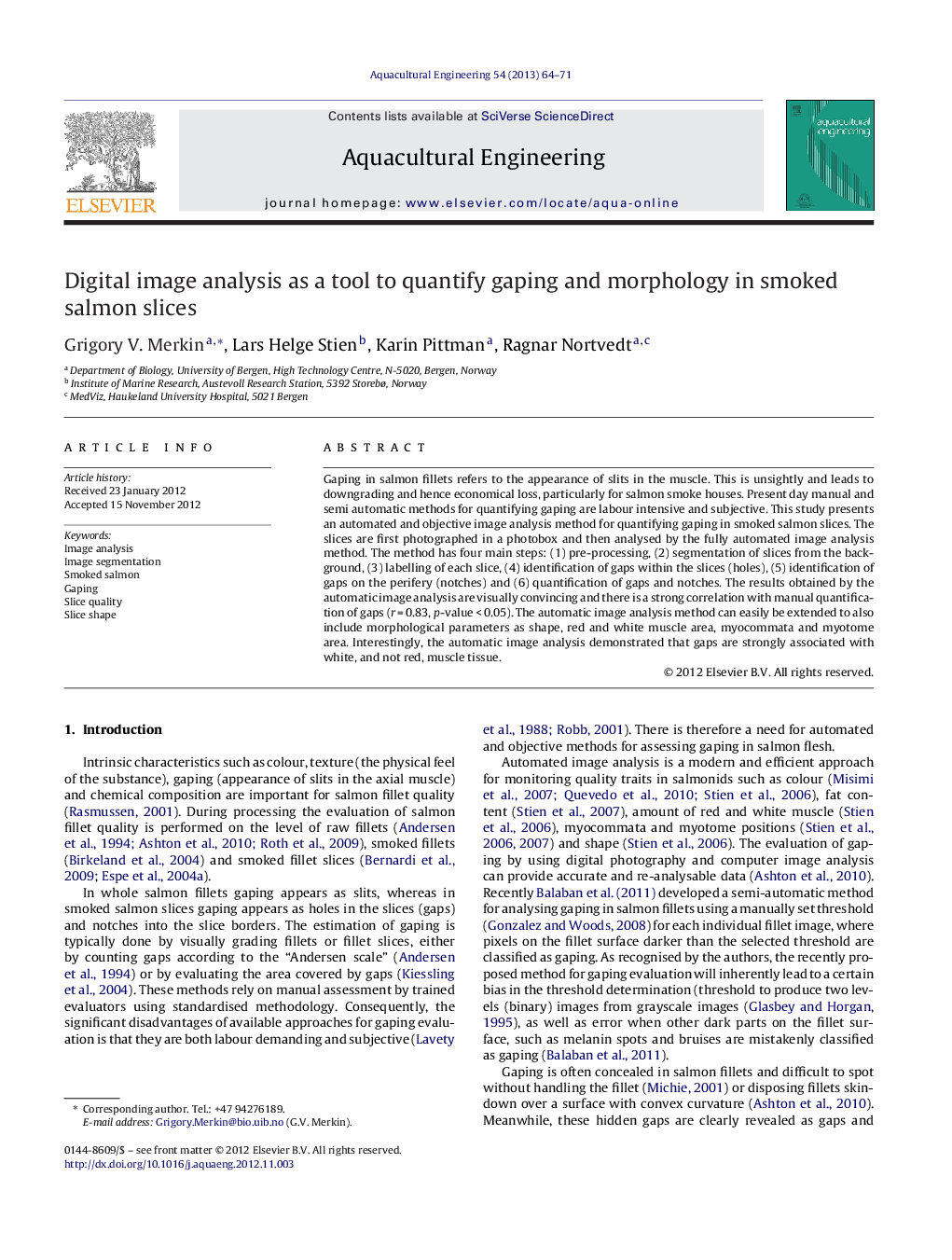| Article ID | Journal | Published Year | Pages | File Type |
|---|---|---|---|---|
| 6381398 | Aquacultural Engineering | 2013 | 8 Pages |
Gaping in salmon fillets refers to the appearance of slits in the muscle. This is unsightly and leads to downgrading and hence economical loss, particularly for salmon smoke houses. Present day manual and semi automatic methods for quantifying gaping are labour intensive and subjective. This study presents an automated and objective image analysis method for quantifying gaping in smoked salmon slices. The slices are first photographed in a photobox and then analysed by the fully automated image analysis method. The method has four main steps: (1) pre-processing, (2) segmentation of slices from the background, (3) labelling of each slice, (4) identification of gaps within the slices (holes), (5) identification of gaps on the perifery (notches) and (6) quantification of gaps and notches. The results obtained by the automatic image analysis are visually convincing and there is a strong correlation with manual quantification of gaps (r = 0.83, p-value < 0.05). The automatic image analysis method can easily be extended to also include morphological parameters as shape, red and white muscle area, myocommata and myotome area. Interestingly, the automatic image analysis demonstrated that gaps are strongly associated with white, and not red, muscle tissue.
⺠This study presents a fully automated and objective image analysis method for quantifying gaping in smoked salmon slices. ⺠There was a high correlation between the manual analysis and automatic evaluation of gap number. ⺠The digital image analysis demonstrated that gaps are strongly associated with white muscle tissue.
